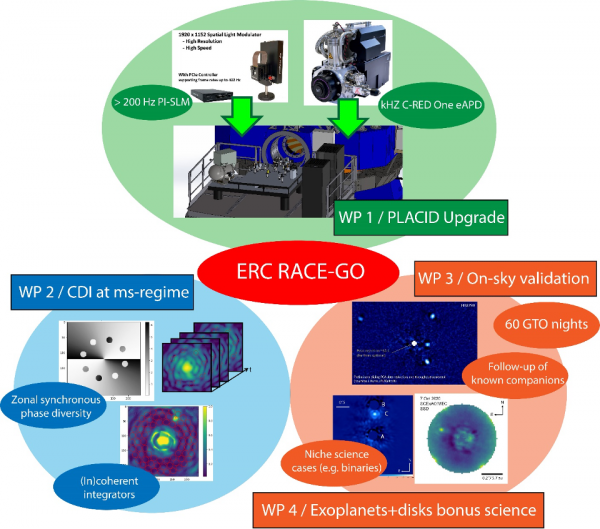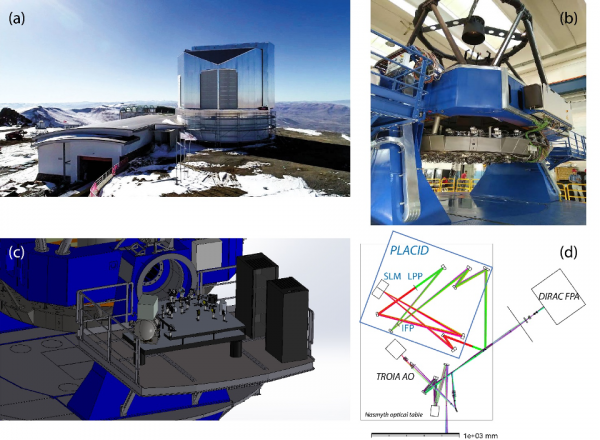C.7: Rapid Active Coronagraphy of Exoplanets from a Ground‐based Observatory
Rapid Active Coronagraphy of Exoplanets from a Ground-based Observatory
Exoplanet discoveries have fascinated the public for over two decades now, yet most detections are actually indirect. This is why direct imaging is presumably a compelling exoplanets detection technique, as it enables to study planet formation in-situ and allows for spectral characterisation of planetary atmospheres. However, in spite of large survey time allocated to the latest high-contrast instrument, only a dozen planetary-mass companions have admittedly been directly imaged so far.
In practice, ground-based high-contrast imaging suffers from several restrictions that limit achievable contrast levels, a key to directly detect faint planets next to their bright stars, in particular at close angular separation where it matters the most. Being able to image a planet in orbit around its host star, in context within its own mature or nascent solar system, is simultaneously fascinating, scientifically invaluable, and still technologically very difficult to this day. The RACE-GO project intends to provide a breakthrough contribution ahead of the upcoming 40-m class “extremely large” telescopes, so one day we can hope to see a “pale blue dot” analog elsewhere in our galactic neighborhood, hence helping to answer questions such as “Are we alone in the Universe?”.
Concretely, RACE-GO aims at bridging the latest digital liquid crystal display technologies with the exoplanet imager instruments currently equipping the largest ground-based astronomical telescopes. By combining the fastest active liquid crystal optical modulators with the best high-speed infrared cameras currently available, RACE-GO will explore the milli-second time domain to distinguish between residual optical errors from the Earth atmosphere, or inside the telescope beam train, and true astrophysical signals in the close vicinity of the targeted star (exoplanet, circumstellar disk etc.). In practice, RACE-GO will fund an upgrade to the upcoming PLACID* imaging instrument, built by a consortium of the University of Bern and the HEIG-VD in Yverdon, for the new DAG 4-m telescope in Turkey. With 60 guaranteed time observing (GTO) nights spread over two years, this will enable to validate the approach on-sky, before bringing the technology onto 8-m observatories and possibly the 40-m European extremely large telescope (E-ELT).
(*) PLACID = Programmable Liquid-crystal Active Coronagraphic Imager for the DAG telescope

Overview of the work breakdown structure of the RACE-GO project. Bottom right figure with image of HIP109427 B is taken from Steiger et al. 2021. Acronyms: PI-SLM = polarisation independent spatial light modulator; eAPD = electron avalanche photo-diode; CDI = coherent differential imaging; GTO = guaranteed time observing.

(a) The completed DAG telescope enclosure, atop Karakaya Ridge in Turkey (3,170m); (b) The completed DAG telescope structure in EIE facilities, Italy, as of late 2020; (c) 3-D model of the DAG Adaptive Optics (AO) Nasmyth platform with all the instruments shown (TROIA AO system, PLACID coronagraph, and DIRAC camera); (d) The PLACID optical design and interface with other instruments on the AO Nasmyth optical table.


